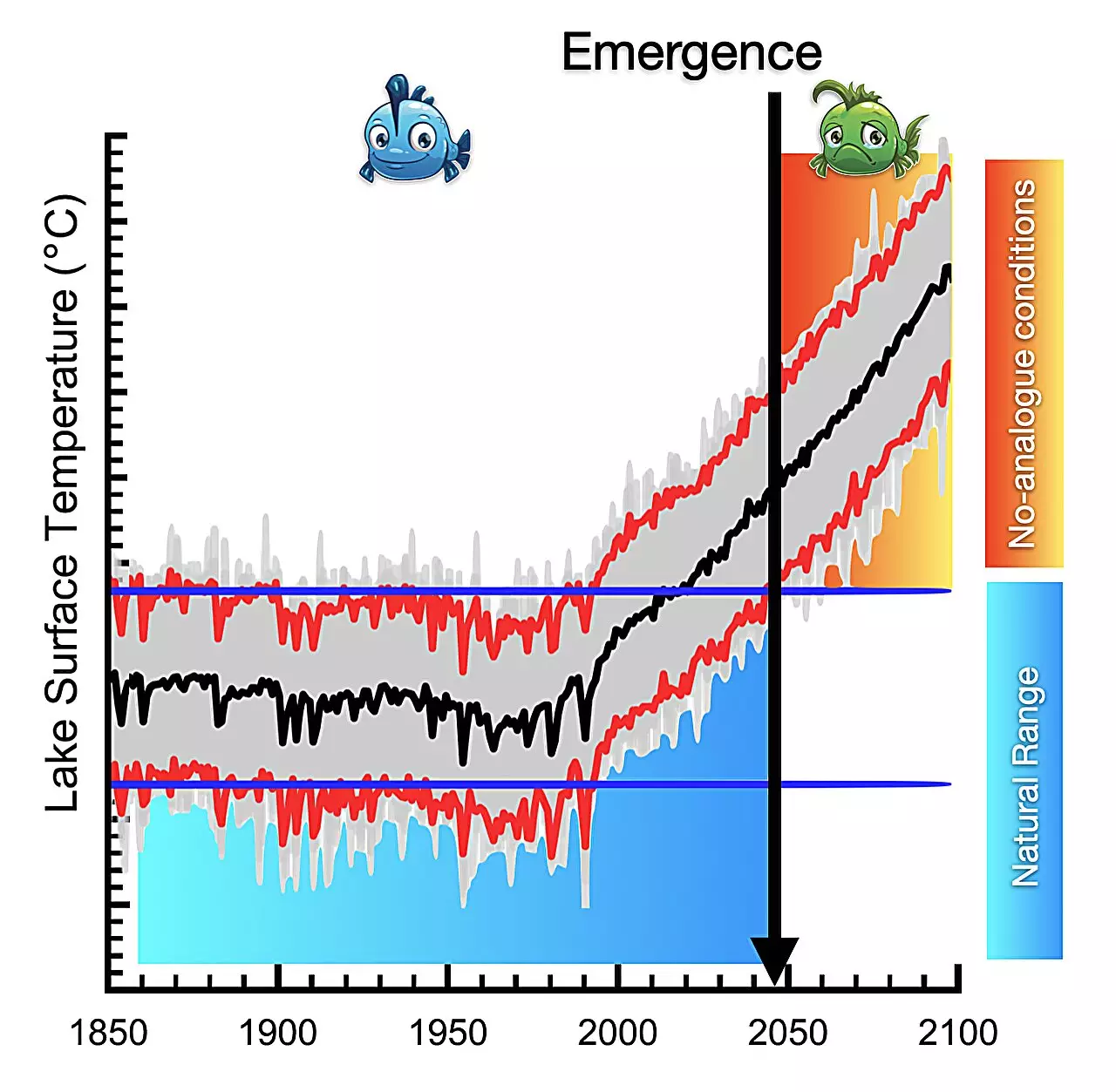Lakes, those vibrant ecosystems that serve as vital resources for biodiversity and human life, are facing an unrelenting threat: escalating temperatures. The latest findings from a comprehensive study in *Nature Geoscience* unveil a chilling projection: as anthropogenic warming persists into the coming decades, lakes around the world may undergo unprecedented thermal changes. This shift promises to reshape aquatic ecosystems irrevocably, foreshadowing a significant ecological crisis that goes beyond mere numbers.
The pioneering research leverages advanced climate modeling techniques, utilizing the sophisticated Community Earth System Model version 2 to extrapolate lake temperature data from 1850 through 2100 CE. This innovative model accounts for the intricate interactions between lake systems and the atmosphere, offering a holistic view of how climate change impacts aquatic environments. By employing an ensemble of 100 simulations, researchers like Dr. Lei Huang from Capital Normal University have meticulously unraveled the complexities of climate variability. This marks a significant leap in climate science, revealing the urgent need to understand the nuanced ways extreme weather patterns can affect our water bodies.
The Disturbing Reality of No-Analog Conditions
One of the most unsettling conclusions of this study is the emergence of “no-analog conditions” in lake environments, a term encompassing changes that are fundamentally outside historical norms. The impending arrival of these conditions serves as a stark warning: as global temperatures rise, lakes will soon exceed their natural thermal boundaries, altering the fundamental ecological fabric. Tropical lakes, rich with a multitude of species, are especially vulnerable. At approximately 2.4°C above pre-industrial levels, these ecosystems will likely experience a rapid transition—one that is both unavoidable and alarming.
As surface temperatures ascend, the immediate effects on shallow-water species are concerning; however, the implications run deeper, quite literally. Some organisms may migrate vertically to seek cooler habitats, but the study emphasizes the critical role of subsurface temperatures. Frequent mixing events in lakes can usher warming layers deeper into the water column, leading to a synchronous emergence of drastic temperature changes. This underlines a crucial aspect often overlooked: while some lakes may shield their depths from surface fluctuations, even these protective mechanisms may not withstand the tidal forces of climate change.
Implications for Biodiversity and Ecosystem Function
The ramifications of these no-analog conditions are profound and extend beyond temperature shifts. Ecosystem disruptions may arise that threaten the integrity of biodiversity in freshwater environments. Unlike terrestrial and marine organisms, many aquatic species lack the capacity to migrate swiftly to more favorable habitats. This inability compounds the danger as species confront habitat degradation, altered food webs, and enhanced competition for resources—all while being trapped within their thermal confines.
Key insights from the study indicate that understanding the timeline and magnitude of these changes is critical for effective ecological management. Adaptation strategies must be rooted in a clear grasp of the projected climatic scenarios as this knowledge can influence conservation planning and climate mitigation efforts. Prof. Axel Timmermann, co-author of the study and Director at the IBS Center for Climate Physics, underscores the urgency of addressing such ecological crises through informed action.
Navigating Uncharted Waters
The emerging narrative surrounding lakes and climate change underscores the necessity for proactive measures in environmental stewardship. Current policies must evolve swiftly to account for the anticipated shifts in aquatic ecosystems, embracing comprehensive research that informs management practices. The dialogue around climate change often prioritizes terrestrial impacts, but the crux of the matter lies in recognizing the fate of our lakes as interconnected with global well-being.
The imminent transformations of lakes due to climate change are not merely scientific data points; they represent a call to action. Stakeholders must unify efforts to protect and restore our freshwater resources before it is too late. Only through cooperative engagement and innovative strategies can we hope to preserve the biodiversity and functionality of these crucial ecosystems in a warming world.

